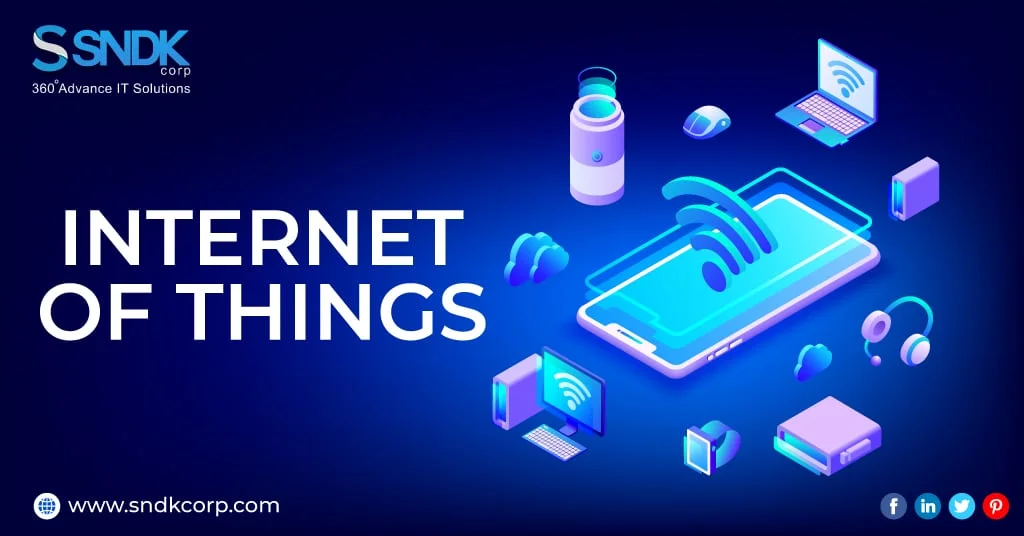Blog
Applications of IoT in Energy Industry
The huge network of computing devices connected to the interne exchange information from one to another without any kind of human interaction. As technology is evolving, we see a huge interconnected network passing on information to one another to communicate. The energy consumption is occurring at a very rapid rate, exhausting the resources in producing it at the same rate, all of this needs a reformation to save energy. Data is the center of IoT and it has all the data to which there was no access earlier, all this data can be used in the revolution of the energy management system.

Applications of Internet Of Things (IoT)
We are in search of a revolution in energy production where we can reduce the use of fossils and emissions and achieve affordable and sustainable power.
IoT in Energy Generation
- Energy system management
The equipment used for energy generation can be monitored through IoT, this will help us keep track of the overall health of the equipment, performance, efficiency and simplify its maintenance. It is very hard to manually find out any problems or defects in complex equipment such as turbines. Therefore, IoT can be very beneficial in forecasting their maintenance needs, achieving better operational efficiency and lower the downtime.
- Automated Processes
Autonomous energy plants and oil drills are possible using IoT, in which smart sensors will be monitoring the whole system’s real-time performance. Machine learning and AI together can be set up to automatically adjust the efficiency of the machine
- Increased Efficiency
IoT can help us increase the efficiency of the power plant and reduce the waste in energy generation. In a fully automated fuel boiler, the oxygen is regulated automatically which allows the fuel to burn completely and contributes to less emission of greenhouse gas. This is done by analyzing the specifics of burning fuel and adjusting the process according to it and also by optimizing fuel combustion.
- Disaster Prevention
IoT solutions can be used to prevent any operational hazard and increase safety for the humans as well as the power plant. This can be done by installing sensors all over the plant to detect any kind of damage or leakage in the plant, on any such report immediate action can save ourselves from any kind of hazard.
IoT in Energy Consumption
- Smart Energy Meters
Smart meters are direct communication between consumers and the power distribution center, which helps the distribution center analyze any kind of performance issue and reduce downtimes. IoT smart meter also detects any damaged line and isolate it without disturbing the overall performance.
- Smarter buildings
IoT devices can make buildings much smarter by managing energy consumption, lighting, heating and humidity with the help of sensors. This makes these buildings more energy efficient. The concept of ZERO NET ENERGY Buildings is also very efficient as the energy consumed by the building is reproduced in the building itself through renewable resources making the net consumption of energy by the entire building ZERO.
- Smart Grids
IoT can help us in energy management as the IoT energy meter interconnect in a single network and create smart energy grids. These are called smart grids as they can automatically re-calibrate themselves after a power cut and decrease the downtime.
- Reduced Downtime
Smart Energy Transmission also requires less downtime; therefore, the smart meters are for two-way communication between the consumer and the distributor. The two communication helps in reducing the downtime as these meters transmit downtime notifications. The distributors act quickly on any downtime notification and solve their problem by reducing the downtime.
Challenges for IoT in the Energy Industry
IoT has several advantages in the energy industry, but it also has to face some challenges. Security is one of the biggest challenges for IoT in the energy industry. The APIs that are used to connect several devices and hardware into a unified network can be a target for attack. Secondly, connectivity is also a concern for IoT as it is important to stay tuned for the complete day to transmit data and feedback. The integration of your new IoT connection to an existing legacy system is a challenge due to technology generation gaps and modernization of existing infrastructure is required.
Conclusion
IoT has entered the energy industry, making changes and providing undeniable advantages. It is providing benefits to the energy provider as well as the energy consumer, the new technologies, transmission, and usage developments are contributing to the greater good of conserving energy. Regardless of these benefits, IoT still has to face some challenges in the energy industry because of the outdated existing systems and connectivity problems. IoT can also help us provide energy at very less cost by recycling procedures and cost-cutting methods. Application of IoT, AI, and machine learning combined all together can revolutionize the whole energy industry by monitoring the energy generation equipment and reducing labor work.
